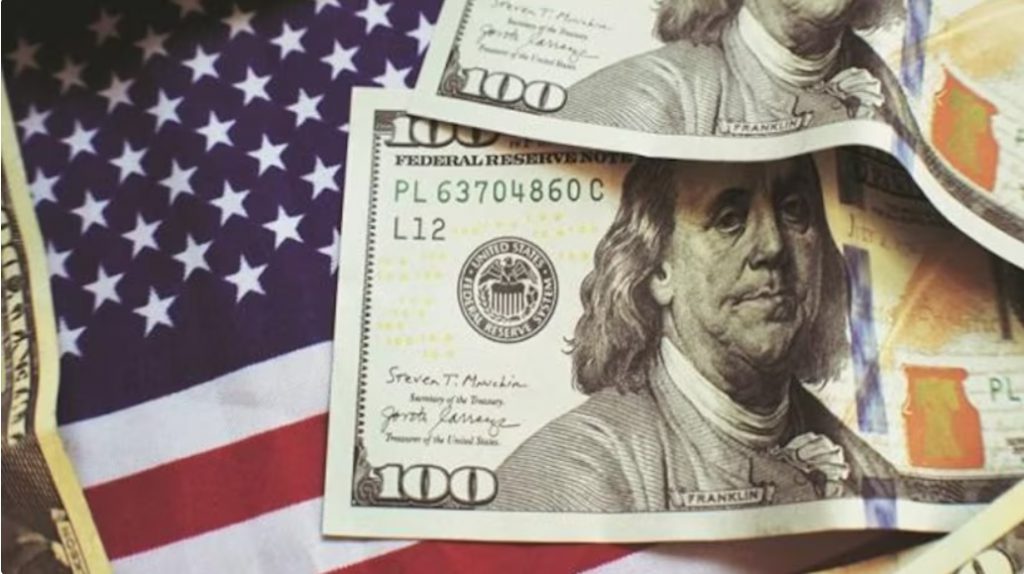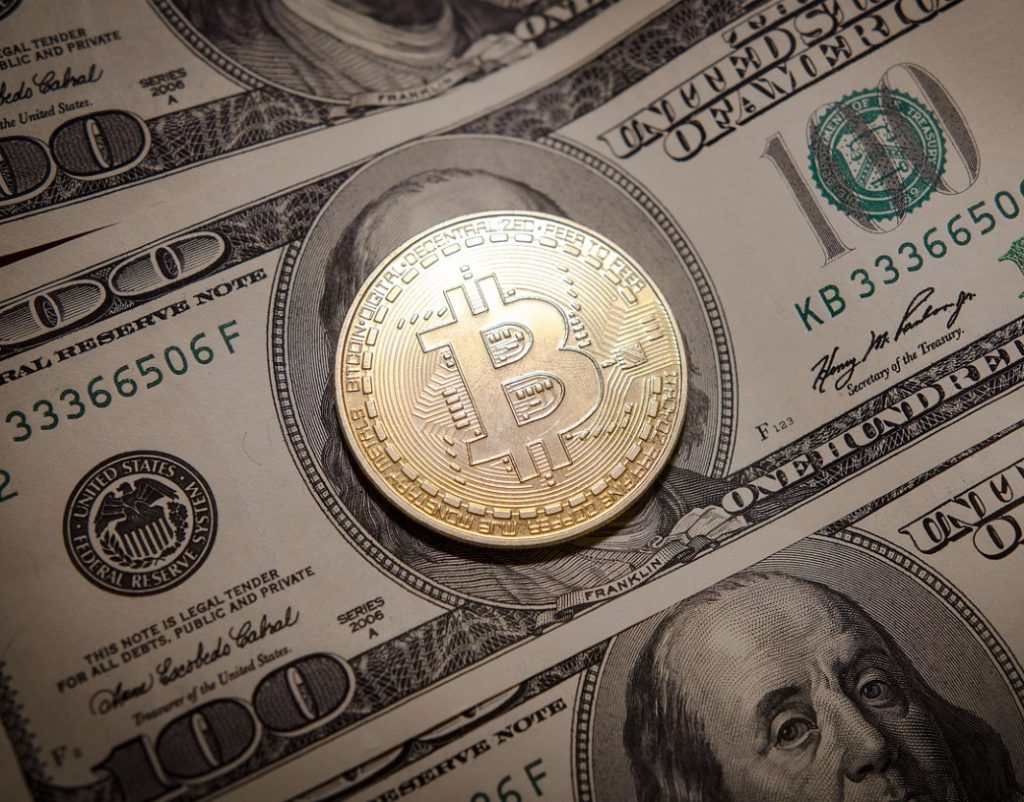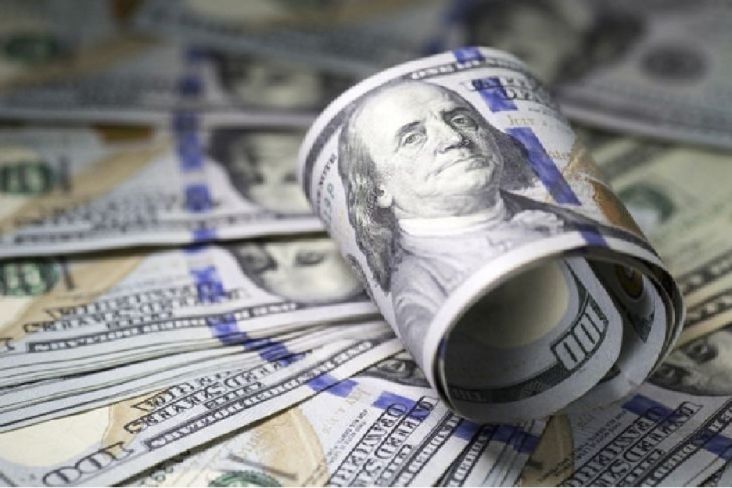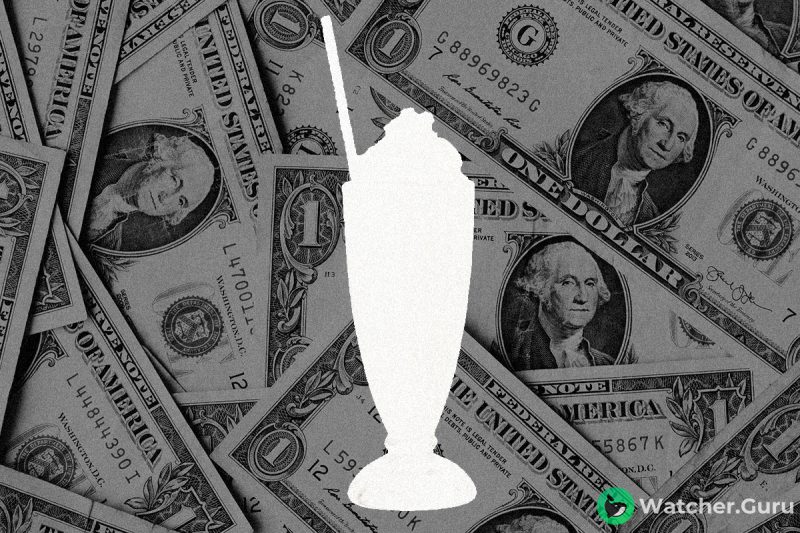Have you heard about the “Dollar Milkshake Theory”? Maybe you have, but you still want to know what the “dollar milkshake theory” is and how it affects our world.
The Dollar Milkshake Theory Explained
In simple terms, the Dollar Milkshake Theory is an economic theory that predicts the United States dollar will continue to strengthen against other currencies. All despite the ongoing global economic turmoil.
This theory suggests that the dollar’s strength will come from the “milkshake” of global liquidity being sucked up by the US, leaving other countries struggling to maintain their currency values.
To fully understand the Dollar Milkshake Theory, it’s crucial to understand how the global financial system operates.


How the Global Financial System Operates
The US dollar is the world’s reserve currency, meaning that it is used by central banks and governments worldwide to hold their foreign exchange reserves.
When global investors and businesses seek to invest in or trade with other countries, they often need to use dollars to do so. This creates a constant demand for dollars, which helps to maintain the currency’s value.
The Dollar Milkshake Theory posits that the United States can maintain this demand for dollars despite its growing debt and other economic challenges.
Why? It’s poised to attract global capital to support its currency.
This is possible because of the unique position the US holds in the global economy, including its strong financial markets, innovative technology sector, and military power.
As a result, the Dollar Milkshake Theory suggests that the US will continue to “suck up” global liquidity, leaving other countries with weaker currencies and struggling economies.
So, who came up with this theory?
Who Came Up with the Dollar Milkshake Theory?
Knowing who created this fascinating economic concept is important now that you understand the theory.
The Dollar Milkshake Theory was developed by Brent Johnson, the CEO of Santiago Capital, a boutique investment management firm. Johnson has been a vocal advocate of the theory and has shared his insights in numerous interviews, podcasts, and presentations.
Brent Johnson’s background in finance and investing has given him a unique perspective on the global economy. He has spent years analyzing the interplay between international markets, currencies, and economic policies.
He has developed a keen understanding of how these factors can influence the strength of a currency. His theory is the culmination of his observations and insights into the global financial system.
While the “dollar milkshake theory” has gained attention in recent years, it’s important to note that not everyone agrees with Johnson’s predictions.
Some economists and financial experts argue that the dollar’s strength is not sustainable in the long term and that the US could eventually face a currency crisis.
However, the theory remains an interesting and thought-provoking perspective on the future of the US dollar and the global economy.
The Dollar Milkshake Theory of Bitcoin


One interesting application of the dollar milkshake theory is its potential impact on cryptocurrencies like Bitcoin.
As the US continues to “suck up” global liquidity, it’s possible that this could lead to a surge in demand for alternative assets like Bitcoin as investors seek to diversify their holdings and protect their wealth from currency devaluation.
The Dollar Milkshake Theory of Bitcoin posits that strengthening the US dollar could be a boon for cryptocurrencies.
As the dollar becomes more attractive to investors, it could increase demand for alternative assets like Bitcoin, which offer a hedge against inflation and currency devaluation.
This increased demand could, in turn, drive up the price of Bitcoin and other cryptocurrencies, creating a positive feedback loop that further strengthens the value of these digital assets.
Of course, the relationship between the Dollar Milkshake Theory and cryptocurrencies like Bitcoin is complex and subject to numerous factors. It’s an interesting perspective to consider when examining the potential future of digital currencies in the global economy.
The Role of Central Banks in This Theory
Central banks play a crucial role in the Dollar Milkshake Theory, as their actions and policies can significantly impact the strength of the US dollar and the global economy.
In particular, the actions of the US Federal Reserve and other central banks worldwide can influence the flow of global liquidity, which is at the heart of this theory.
For example, when central banks engage in quantitative easing (QE), the process of injecting large amounts of money into the economy by purchasing financial assets, they can increase the supply of dollars in the global financial system.
This can lead to a “race to the bottom,” in which other central banks engage in their own QE programs to counteract the effects of the US dollar’s strength, resulting in a global flood of liquidity.
In the Dollar Milkshake Theory context, this global flood of liquidity can ultimately benefit the US dollar, as it can “suck up” the excess liquidity and strengthen its position as the world’s reserve currency.
As a result, central banks and their policies play a key role in shaping the dynamics of the Dollar Milkshake Theory and its potential impact on the global economy.
How the Dollar Milkshake Theory Happens
To better understand the mechanics of the Dollar Milkshake Theory, let’s examine the process by which it unfolds.
- Central banks engage in quantitative easing: In response to economic challenges or to stimulate growth, central banks around the world engage in quantitative easing, injecting large amounts of money into the economy by purchasing financial assets.
- Global liquidity increases: As central banks engage in QE, the supply of dollars in the global financial system increases, resulting in a flood of global liquidity.
- Demand for US dollars grows: Despite the flood of global liquidity, demand for US dollars continues to grow, thanks to the unique position of the United States in the global economy.
- US dollar strengthens: As demand for US dollars grows, the currency’s value strengthens. This, in turn, can lead to a “milkshake” effect as global liquidity is “sucked up” by the US, leaving other countries with weaker currencies and struggling economies.
- Alternative assets gain popularity: As the US dollar continues to strengthen, investors may seek to diversify their holdings and protect their wealth from currency devaluation by investing in alternative assets like Bitcoin or gold.
- Currency wars and trade tensions escalate. As other countries struggle to maintain their currency values, currency wars, and trade tensions may escalate, leading to a more fragmented global financial system.


What You Need to Know About the Dollar Milkshake Theory
According to the Dollar Milkshake Theory, the unprecedented monetary easing by the world’s central banks, which has added nearly $30 trillion in reserves to the economy since 2008, created a large “milkshake” of liquidity.
When the Fed’s policy changed from easing to tightening and interest rates rose, they were metaphorically replacing a syringe with a large straw that sucked liquidity out of the world’s markets. The dollar increases against other currencies as liquidity is vacuumed up, placing tremendous pressure on nations with dollar-denominated debt. (Simply put, the cost for those nations to service their debt has increased significantly.)
Companies and governments outside of the U.S. face higher credit risks due to their decreasing capacity to settle overseas obligations denominated in dollars. This increases investor apprehension and forces more capital to leave the country.
FREQUENTLY ASKED QUESTIONS ABOUT THE DOLLAR MILKSHAKE THEORY
Why is it called the Dollar Milkshake Theory?
To demonstrate how the U.S. currency tends to suck up investors’ funds globally amid significant crises, the Milkshake Theory compares it to a delicious milkshake and the use of a straw to suck up investors’ money.
What is the Dollar Milkshake Theory Hedge?
According to the “dollar milkshake theory, investors should use the dollar to hedge market uncertainty. The idea contends that the U.S. dollar can keep its relative worth the best for the longest time because of the United States’ systemic role in global banking, even though other fiat currencies depreciate over time.
Conclusion
In conclusion, the Dollar Milkshake Theory suggests that the US dollar will continue to strengthen against other currencies due to the constant demand for dollars in the global economy. While not everyone agrees with this theory, it remains an interesting perspective on the future of the US dollar and the global economy.
Additionally, the Dollar Milkshake Theory may impact the value of cryptocurrencies like Bitcoin, and central banks play a crucial role in shaping the dynamics of this theory and its potential impact on the global economy.





